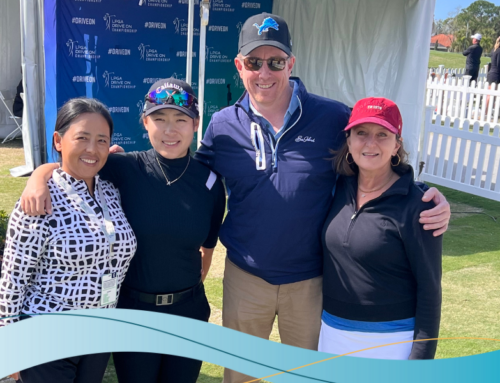
If there’s one sport that tends to putt a smile on a lot of faces, it’s definitely golf. According to the National Golf Foundation, when factoring in both those who engage with on- and off-course forms of the game, golf participation topped 40 million in the U.S. for the first time in 2022. While there are several reasons that attribute to the game’s rise in popularity, one that seems to top the list is that it’s a low-impact sport and can be enjoyed by people of all ages and fitness levels.
“With golf being predominantly low impact, the chances of having an acute injury are rather low,” said Maria Scafario, Titleist trained physical therapist and site supervisor of Coastal Orthopedics’ Lakewood Ranch Physical Therapy Department. “However, injuries stemming from overuse are fairly common.”
The most prevalent injuries include back pain, elbow pain, either attributed to Golfer’s Elbow or Tennis Elbow, shoulder pain, including rotator cuff pathology, hip pain, and less commonly, knee and ankle pain.
In order to prevent injuries and to keep yourself on the green for many years to come, it’s vital to have a good routine in terms of flexibility and strength that addresses the motions specific to golf and promotes overall general mobility and strength. Below, we have highlighted some tee-rific ways you can treat and avoid these common injuries to keep you at the top of your golf game.
Back Injuries and Pain:
Maintaining good core strength is a huge factor in preventing back pain that may arise from playing golf. Good areas to focus on are spinal mobility, including rotation throughout the spine, and pelvic mobility, including posterior and anterior tilt range and control. Hip mobility is also important to maintain to allow for proper weight shifting and swing mechanics.
Elbow Injuries and Pain:
While most elbow injuries are caused by repetition and overuse with improper swing form, they can also be caused by taking a large divot. It’s important to rest with these types of injuries and find the underlying cause as to why the wrist and elbow are being overused to avoid more damage. Common treatments can include stretching, eccentric strength training and iontophoresis, the process of passing a weak electrical current through the skin.
Shoulder Injuries and Pain:
Good shoulder mobility is essential to maintaining good range of motion during a backswing or follow through. Rotator cuff weakness and range of motion deficits can affect how much club speed a swing is able to generate. Flexibility of the shoulder and strengthening of the periscapular muscles and rotator cuff will help to maintain the shoulder joint’s health and allow for better swing mechanics.
Hip Injuries and Pain:
Hip mobility is especially important with the end range of a backswing and follow through. Practicing good internal and external rotation of the hip will allow for improved weight shifting during the swing.
Knee/Ankle Injuries and Pain:
Good knee and ankle health is needed to allow for proper weight shifting during swing and traversing over uneven terrain, including sand traps, different grass depths and even squatting down to retrieve a ball from the cup.
If you’re struggling with a golf injury that just won’t go away, Coastal Orthopedics, a full-service provider of comprehensive orthopedic surgery, sports medicine, spine care, diagnostic imaging and physical therapy service, can help! We’re proud to have several Titleist trained physical therapists on our team that can help you get yourself back on the course as soon as possible. To see one of our Titleist trained physical therapists, patients will first need to make an appointment with one of our physicians. Contact our team of medical professionals today to get started!





